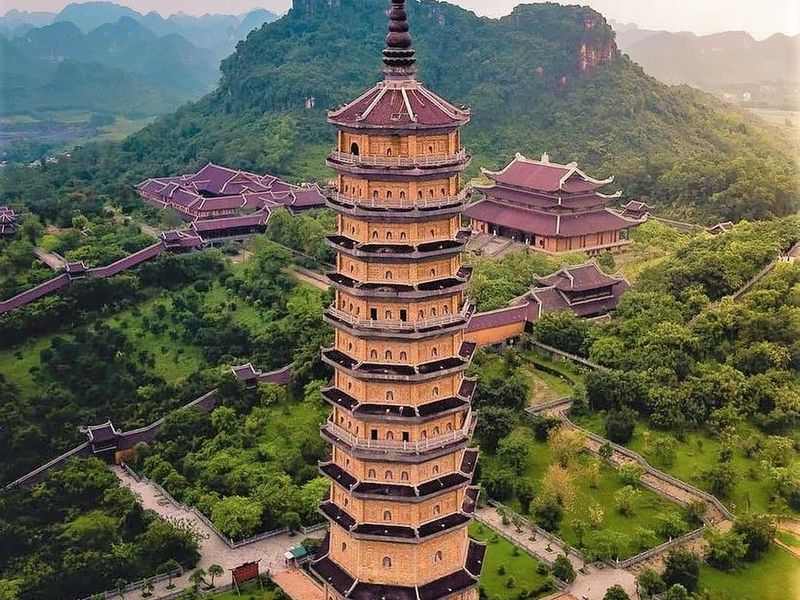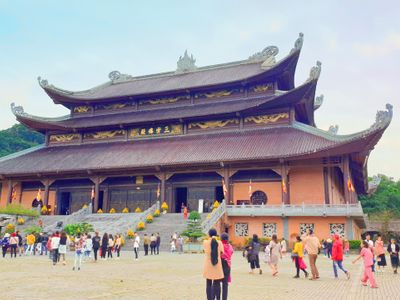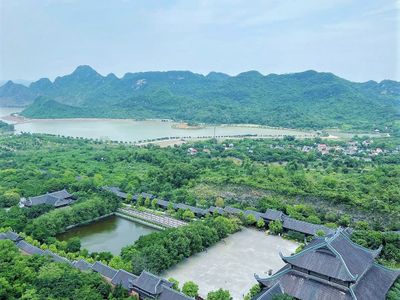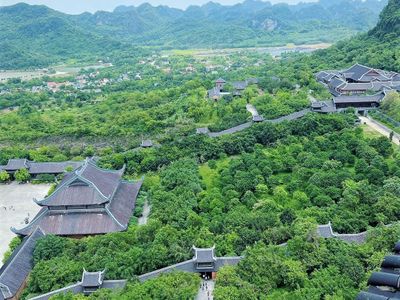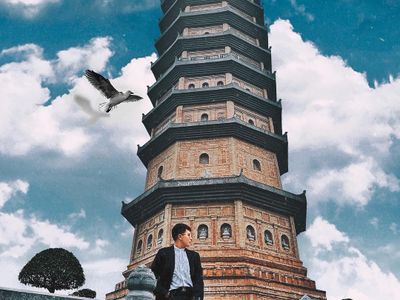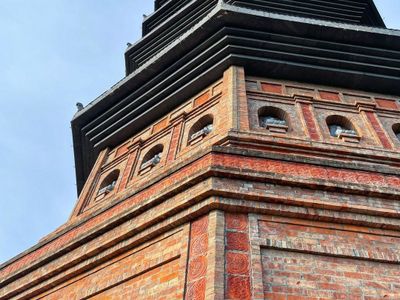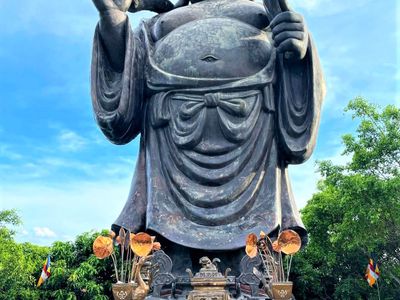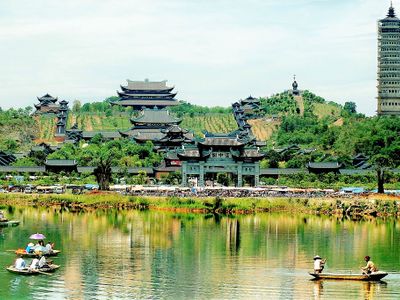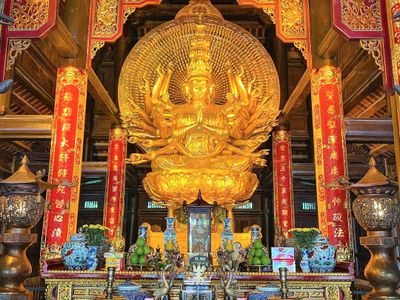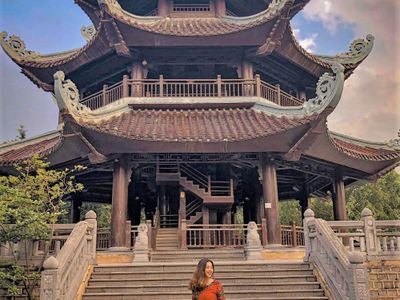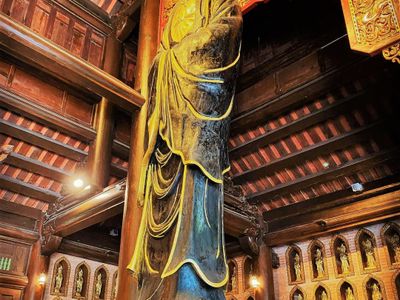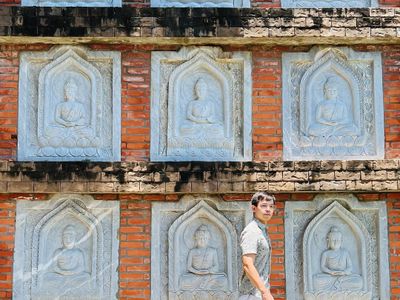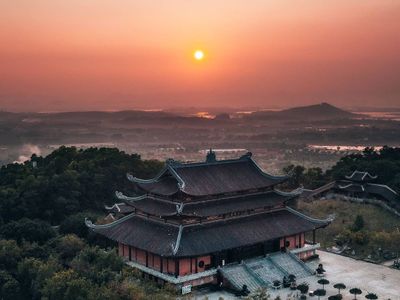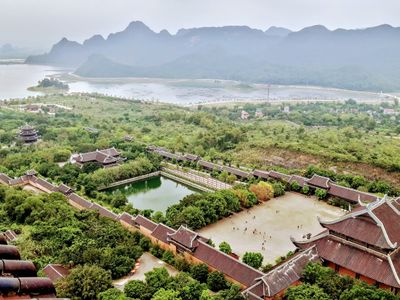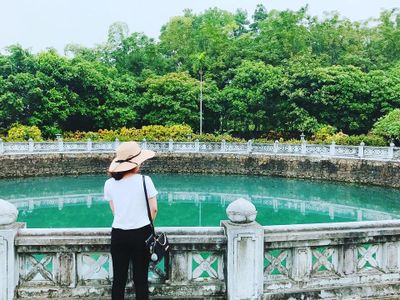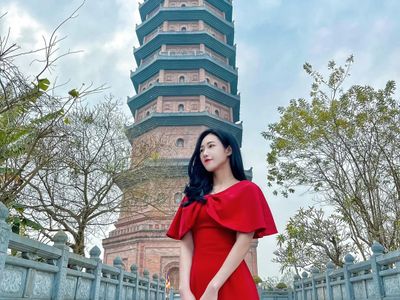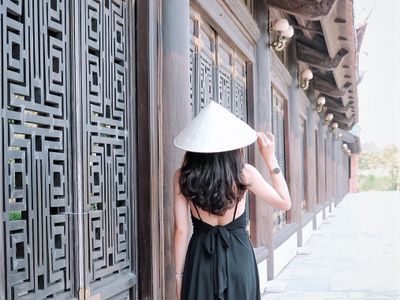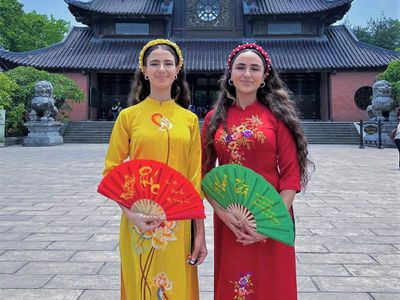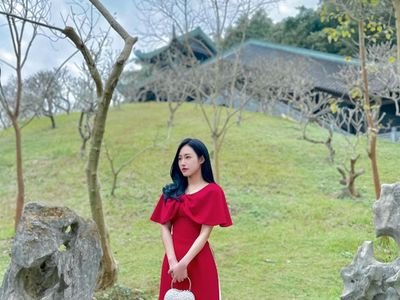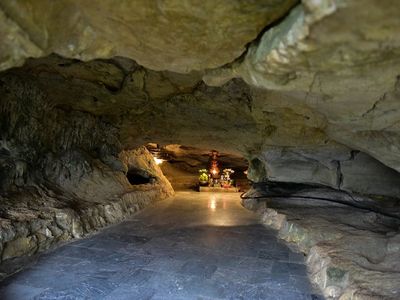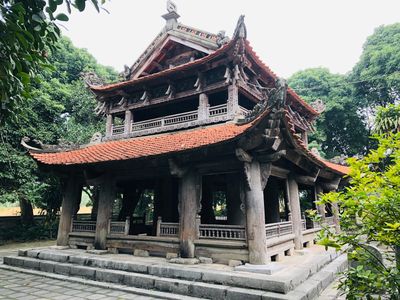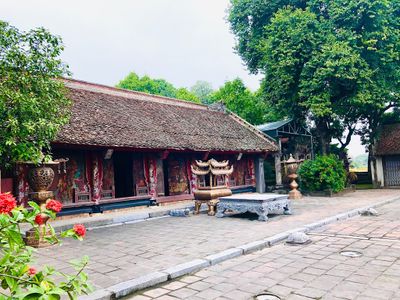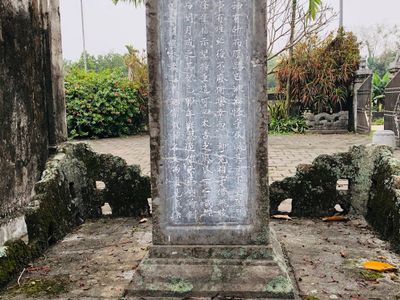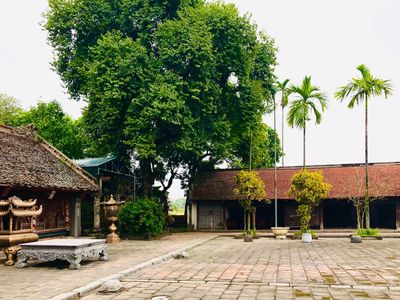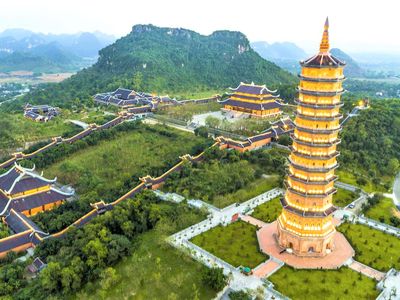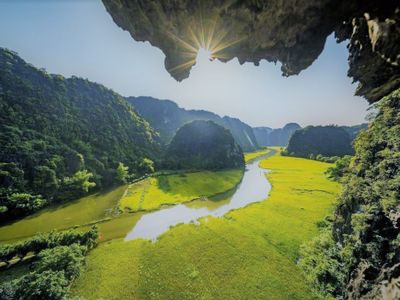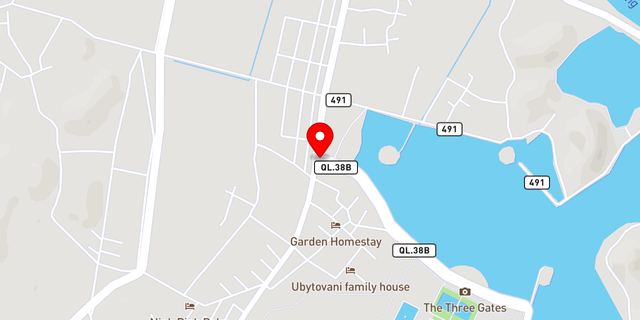Bai Dinh Pagoda, Ninh Binh
Related Services
General Information
Travel Seasons
The most ideal weather at Bai Dinh and Trang An is from January to March in the lunar calendar, or from February to April in the solar calendar. The scenery here emerges beautifully and fascinating in the cool, warm spring weather. Especially, this is the time when traditional festivals take place, and you can combine sightseeing and praying for good luck at Bai Dinh Pagoda.
However, there are too many tourists who also visit Bai Dinh in spring, easily leading to so much noise, crowd, and joistling. If you don’t like that, you can visit Bai Dinh - Trang An in the autumn. The weather is very warm and comfortable.
Transportation Guides
The Bai Dinh - Trang An tourism complex is located to the south of Hanoi, about 96 km away. To travel from Hanoi to Bai Dinh, you can choose one of the following transportation options
By bus
Every day, there are many buses from Hanoi to Ninh Binh departing from Giap Bat Station and My Dinh Station. There is a departure every 20 minutes, which is convenient for tourist' schedules. The price for one trip ranges from 70,000 to 80,000 VND per person. Upon arriving at Ninh Binh Station, you can take a bus or taxi to Bai Dinh at a cost of about 130,000 VNDfor each trip.
By motorcycle
If you prefer to save money and have more autonomy in moving, you can ride a motorcycle from Hanoi to Bai Dinh, following National Highway 1A to reach the center of Ninh Binh city. Then, follow the direction signs to get to Bai Dinh
By train
Apart from these two above vehicles, you can choose a train to go to Ninh Binh train station. After that, you can take a bus or taxi to reach Bai Dinh. The train price is from 70,000 to 120,000 VND per seat depending on your selected seat class.
Ticket Prices
Bai Dinh - Trang An is a very large spiritual tourism complex. Therefore, if you don’t have time to walk, you can choose an electric car to get to the pagoda. The price for each turn is about 30,000 VND and for return is about 60,000 VND.
Moreover, you can hire a tour guide at a price of about 300,000 VND. 500,000 VND fee for tour guide on both of the former and latter Bai Dinh pagodas to understand deeply the spirit and features of Vietnamese culture. The price to get to Bai Dinh Pagoda Stupa is 50,000 VND.
Attractions
Bai Dinh Temple is dubbed as a spiritual gem in Vietnam. Every year, it welcomes thousands of Buddhists from afar who come on pilgrimages and to enjoy the spring scenery.
The new Bai Dinh Pagoda
The Bai Dinh Pagoda complex spans an area of up to 80 hectares, including many famous locations as below.
Bai Dinh Bell tower
The Bell Tower of Bai Dinh Pagoda is a majestic structure made of steel-reinforced concrete imitating wood, with architecture modeled after ancient bell towers. On the tower hangs a bell weighing over 36 tons, engraved with numerous ancient characters and extremely lively decorative patterns.
Arhat Corridor
The Arhat Corridor is one of the outstanding things of the Bai Dinh - Trang An complex. This corridor consists of 234 compartments connecting the two ends of Tam Quan. This construction is up to 1052 meters long with 500 statues of Arhats made entirely of monolithic blue stone, each weighing about 4 tons. Each statue has a different shape and expression, depicting the 500 emotions of humanity.
Bodhisattva Avalokitesvara Hall
Bodhisattva Avalokitesvara Hall worships Guan Yin - Bodhisattva. The hall consists of seven compartments. The middle space is where the statue of Avalokitesvara with a thousands eyes and a thousands hands, showing compassion to all beings. With its magnificent architecture, the hall is decorated with various Buddhist motifs such as lotus flowers, bronze cranes. The most prominent feature is a bronze Buddha statue weighing up to 80 tons and standing 9.57 meters tall.
Ancient Bai Dinh Pagoda
This entire Bai Dinh Pagoda complex was built before 2005, in the period of the Dinh, Tien Le and Ly dynasties.
Temple of Saint Nguyen
The temple was built in a position "leaning against the mountain and facing the river," where a statue of the Zen master Nguyen Minh Khong is placed. Legend has it that, once he went to the mountains to find medicine to cure the king, he accidentally discovered a beautiful cave with a landscape of mountains, so he built a place to worship Buddha there. Not only a famous physician with high medical skills, but he is also revered as the ancestor of the bronze casting craft. Currently, he is worshiped in many places in Ninh Binh.
Bright cave, Dark cave
After climbing 300 steps, you will reach the Tam Quan gate, at which point you will see two forks on the slope. This is the path leading to Bright Cave and Dark Cave.
Bright Cave is a place to worship Gods and Buddha.The reason it is called Light Cave is that the cave is full of natural light. Outside the cave entrance, there are two statues of solemn gods with fierce faces, and deeper inside, there are Buddha statues for worship. Going to the end of the cave, you will come to the sacred Cao Son temple.
After that, when coming to the Dark Cave, you will admire a very fanciful scene. Above are stalactite formations formed along underground water lines. The stair of the pathway are vividly decorated with winding dragon shapes. In the middle of the cave is a natural well that contributes to air conditioning in the cave. Inside the cave, there are statues for worshiping Mother Goddess and various immortals. Some statues are placed deep in the rock niches and have their own altars.
Ngoc Well
According to legend, the water from the Ngoc Well was used by Zen master Nguyen Minh Khong to decoct medicine for the king and the people. Surrounding the well's mouth is a stone railing forming a large circle, covered with many plants around it.
The Ngoc Well has a moon-face shape with a diameter of nearly 30m and a depth of about 6m. The mouth of the well is constructed from Dinh Mountain stones. The total area of Ngoc Wel up to 6000m2, with four octagonal towers at each corner, standing out in the middle of the temple's scenery. The clear and cool water from the well is often used for ceremonial offerings at the temple.
Cao Son Temple
The temple worships the god governing the Vu Lam mountain region. According to historical records, this was where Dinh Bo Linh lived when he was a child. The temple was built during the Dinh Dynasty (968 – 980).
Bai Dinh Pagoda records
In addition to the beauty, the superficiality and the unique architecture, Bai Dinh Pagoda also owns many records such as:
The largest gilded bronze Buddha in Asia
The statue of Buddha Shakyamuni seated on a lotus at the main hall in the Phat Chu worship hall has been recognized by the Asia Record Center as the largest gold-plated bronze Buddha statue in Asia. The statue weighs over 100 tons, made of pure bronze and gold-plated, stands 10m high, and is placed on a 1.5m high pedestal.
The largest bronze Maitreya Buddha statue in Southeast Asia
The Maitreya Buddha statue sits on the hill to the right of the Three Jewels Palace. The statue is casted in bronze and talls 10 m, weighs 80 tons, located on a hill 100m high above the temple yard.
The tallest stupa in Southeast Asia
The stupa is located to the right of Tam The Palace, behind the statue of Buddha Maitreya, viewed from the main hall. The stupa has 13 floors and a hexagonal perimeter of 24m. It stands 99m tall, with the number 9 symbolizing endurance and eternity. The architecture of the entire stupa is designed in the Buddhist style of the Ly Dynasty and imbued with the spirit of Vietnam. Especially, on the 13th floor of the stupa, is the place to worship the relics of the Buddha, which was brought from India.
What to Eat?
Bai Dinh - Trang An eco-tourism complex is a famous landmark of Ninh Binh, the ancient capital land. Coming to this place, you cannot miss the specialties such as:
Ninh Binh goat meat
The characteristics of Ninh Binh goat meat are very firm, low-fat and fragrant. Being grazed on the hilly areas, goats have to run and jump a lot, so they have firmer muscles, much less fat than those of goats grazed in the plain. Ninh Binh goat meat can be processed in many different dishes such as rare goat, steamed goat, grilled goat, goat spring rolls, etc.
Mountain snail
Once visiting Ninh Binh, you must try dishes from mountain snails. These snails only appear in limestone in the rainy season. You will find the sweet, crispy and chewy taste in every recipe of mountain snail like ginger stew snail, chili lemongrass fried snail, and so on.
Eel vermicelli
Besides familiar dishes such as mountain goat meat, swamp eel salad, scorched rice, Ninh Binh is also famous for eel vermicelli. You should enjoy this dish in the morning to feel the essence of the cuisine here. Each strand of vermicelli is tough, the eel meat is fragrant, soft; and the fishy smell has been eliminated along with the rich broth. Surely this will be a dish to help you start a new day full of energy when coming to Bai Dinh.
Fish salad
Coming to Bai Dinh - Trang An, you cannot ignore the fish salad, a food made from fresh swamp eel. With the professional skill of the chef, the fishy smell will be removed, so everyone can enjoy this dish. The food is coated with roasted glutinous rice, and dipped with vinegar sauce, so when you eat it, you will feel the fleshy and spicy taste.
Roasted field crab with guise leaves
Roasted field crab with guise leaves is one of the famous specialties here. The taste of the dish is very impressive at the first taste. The selected field crabs are the types that live naturally, so the meat is firm and fragrant. After being processed, the crab will have a very eye-catching yellow color with high crispiness mixed with the pungent taste of guise leaves. It is great to eat with white rice.
Specialties for Souvenirs
In addition to the special dishes here, you can choose some specialties as gifts when visiting Bai Dinh such as:
Ninh Binh burned rice
Burned rice is an ancient rustic dish of Ninh Binh people. It shows the simplicity, refinement and skillfullness of the locals. Burned rice is processed very meticulously to have a high crispiness but still retaining the sweet and rich taste of each grain of rice.
Kim Son wine
Kim Son wine is touted as a must-buy gift when visting Bai Dinh. The wine uses premium golden flower sticky rice from the Kim Son paddy region, brewed with traditional herbal yeast and 36 type of herbs. Especially, it's cooked with well water, giving it a clear color and delicious aroma.
Gia Vien shrimp paste
Gia Vien shrimp paste is a dish that embodies the distinctive character of this region. With its abundant freshwater aquatic resources, including shrimp, the delicious shrimp are soaked according to a family recipe to create a unique dish with a rich and bold flavor.
Yen Mac fermented pork roll
Yen Mac fermented pork roll is also one of the favorite dishes of many people. The roll is made from fresh pork, then fermented for 1-2 days to have a sour taste. Moreover, it has the spicy taste of chili sauce, making it very addictive. The ouside of the roll is wrapped in guava leaves to keep the delicious flavor and the color is very appealing to the eye.
Tips
Bai Dinh pagoda complex is one of the most fascinating and spiritual destinations. However, in order to have a perfect trip to visit here, please remember these below recommendations.
- Bai Dinh is a huge landmark, so you will surely walk a lot. Please use trainers for most convenience.
- Inside the temple premises, you may see many attractive souvenirs. But please do not buy them here, the price may be twice or three times. You can buy them in the shops at the foothill, the price would be much better.
- You should keep some change in your pocket for luck worship or donation.
- If you come here in spring for landmark sightseeing, you should bring an umbrella to prevent heavy drizzle.
Justfly is delightful to share with you our experience on the Trang An tour. Have a nice trip!
Customer Reviews
4,8 /5
5 reviews
